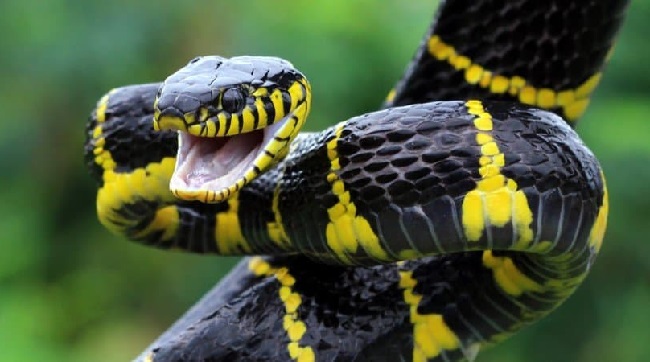The term “mammal snake” is a misnomer that often leads to confusion. While snakes are reptiles and not mammals, some snake species have adaptations that resemble mammalian features.
In this article, we will delve into the fascinating world of snakes, exploring their diverse characteristics, adaptations, and dispelling the misconception surrounding the term “mammal snake.”

Some Mammal Snake
Here are some of the mammal snakes:
Read Also:
Viviparous Snakes
Some snake species exhibit viviparity, a reproductive strategy more commonly associated with mammals. Viviparous snakes give birth to live young instead of laying eggs.
These snakes have internal fertilization, and their embryos develop within the mother’s body. Examples of viviparous snakes include the garter snake (Thamnophis sirtalis) and the boa constrictor (Boa constrictor).
Maternal Care
While not exclusive to mammals, maternal care is a behavior observed in some snake species. After giving birth, some female snakes actively protect and care for their offspring.
They may remain with the young for a period, provide warmth, and even assist in their initial feeding. Examples of snakes exhibiting maternal care include the African rock python (Python sebae) and the king cobra (Ophiophagus hannah).
Rattlesnake Rattles
Rattlesnakes are known for their iconic rattles, which they use as a warning mechanism. Each time a rattlesnake sheds its skin, a new segment is added to the rattle, producing the distinctive sound.
While the rattle may resemble mammalian body parts, such as a mammal’s tail, it is important to note that rattlesnakes are reptiles and not mammals.
Fascinating Facts About Snakes
Here are some of the facts about snakes:
The Diversity of Snakes
Snakes are a diverse group of reptiles belonging to the suborder Serpentes. There are over 3,600 known species of snakes, found in a variety of habitats across the globe, except in Antarctica.
Unique Adaptations
Snakes have evolved numerous unique adaptations that set them apart from other reptiles. Some of these adaptations include their elongated bodies, lack of limbs, and highly flexible jaws.
Their ability to swallow prey larger than their head is made possible by their loosely attached jaws and stretchy ligaments.
Scale Variations
Snakes are covered in scales, which protect their bodies and aid in movement. These scales come in various shapes and sizes, allowing scientists to identify and classify different snake species based on their scale patterns. Scale variations also play a role in a snake’s habitat, behavior, and camouflage.
Sensory Perception
Snakes possess an incredible sense of smell through their forked tongues and a specialized organ called the Jacobson’s organ.
This allows them to detect chemical signals in their environment, helping them locate prey and potential mates.
They also have excellent vibration detection abilities, which assist in hunting and navigating their surroundings.
Venomous and Non-venomous Snakes
While many snake species are harmless to humans, some have venomous adaptations for hunting and self-defense. Venomous snakes inject venom into their prey through specialized fangs.
It is important to remember that most snake species are non-venomous and play vital roles in controlling rodent populations and maintaining ecosystem balance.
Ecological Importance
Snakes play a crucial role in ecosystems as both predators and prey. As predators, they help control populations of rodents and other small animals, contributing to the balance of nature.
Snakes themselves serve as prey for larger predators, such as birds of prey, mammals, and other reptiles.
Longevity
Some snake species can live for surprisingly long periods. For example, the ball python (Python regius) can live for over 30 years in captivity, while some larger species, such as the reticulated python (Python reticulatus), have been recorded to live for over 20 years in the wild.
Conservation Concerns
Due to habitat loss, poaching, and other factors, many snake species are facing threats to their survival.
Conservation efforts are essential to protect these incredible creatures and maintain the delicate balance of ecosystems they inhabit.
Read Also:
Conclusion
The term “mammal snake” is misleading and creates confusion. While snakes are reptiles, they possess unique adaptations and behaviors that may resemble those of mammals.
Viviparity, maternal care, and specialized structures like rattles are fascinating aspects of snake biology.
It is essential to understand the biological classifications and distinctions between reptiles and mammals to appreciate the true nature of these incredible creatures.
























